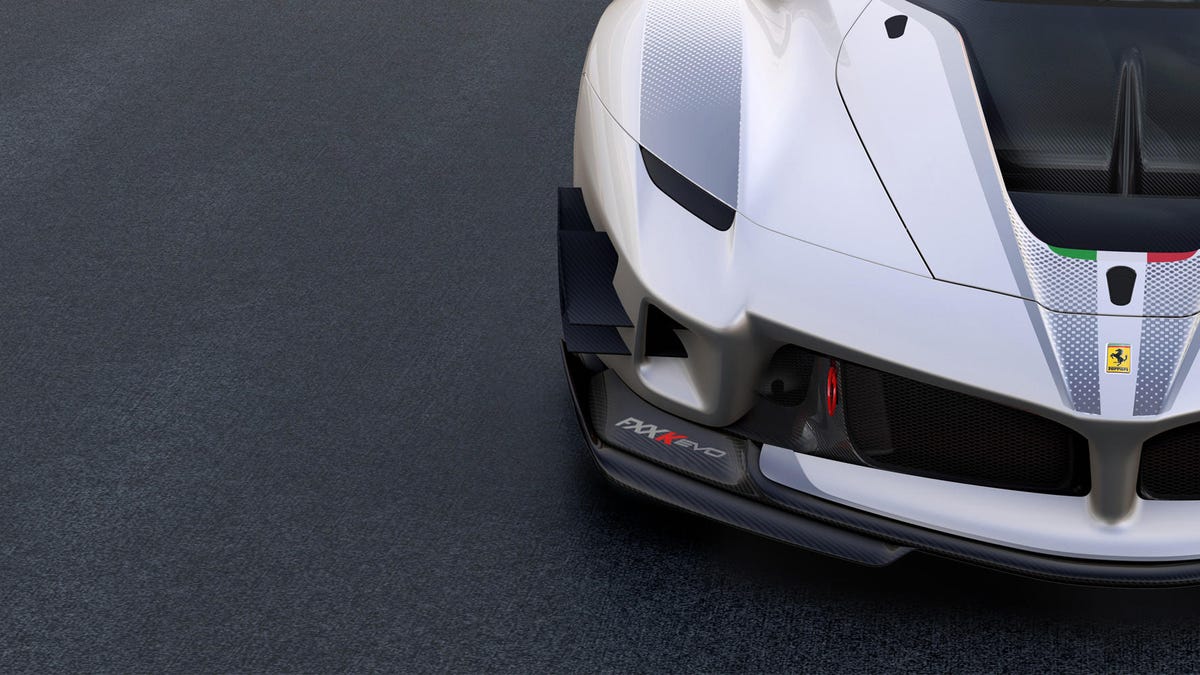Ferrari FXX K Evo sheds weight, adds downforce
If you thought the FXX K was crazy on its own, think again.

You can always rely on Ferrari to take an already-insane hypercar and make it even crazier.
Say hello to the Ferrari FXX K Evo. It's the most capable variant of the LaFerrari hybrid hypercar to date, improving on many of the already-improved-upon parts from its track-only FXX K variant. The FXX K Evo is available both as a standalone car and as an upgrade package for owners of the FXX K. You do own one, don't you?
If you think it looks scary, try holding onto your lunch as this thing flies around a track at full clip.
The FXX K's improvements focus on aerodynamics and weight. The rear now sports a twin-profile fixed wing, as opposed to the standard FXX K's dual winglets. The rear wheel arches have larger vents to improve airflow and increase downforce, and both bumpers were tweaked, along with the underbody.
Ferrari claims the FXX K Evo will generate 1,410 pounds of downforce at 124 mph, and at max speed, that number rises to more than 1,830 pounds. This is a 23 percent improvement over the "regular" FXX K, and nearly double that of the road-legal LaFerrari. Despite all the additions, Ferrari claims it's lighter than the standard FXX K, but it did not give a specific curb weight.
As with the FXX K and LaFerrari, the FXX K Evo relies on a hybrid powertrain. An 860-horsepower V12 mates to an electric motor to produce a net 1,050 hp. Power reaches the rear wheels by way of a seven-speed, dual-clutch transmission.
Changes to the interior are minimal. The screen that stands in for the rearview mirror is now larger, measuring 6.5 inches. There's also a new steering wheel with integrated shift paddles.
Since it's not road legal, owners get the chance to pilot these cars in something called the XX program. Along with the Enzo-based FXX and the 599-based 599 XX, FXX K Evo owners get the chance to drive their cars on nine different tracks around the world. Ferrari brings the cars and support staff to the tracks, and the owners just have to show up and drive. When you're paying more than $3 million for a car, though, it had better include its own support staff.

